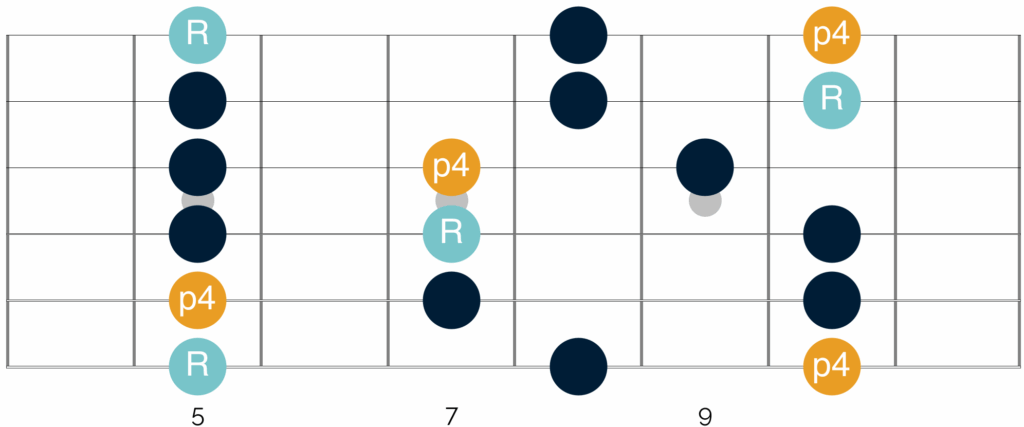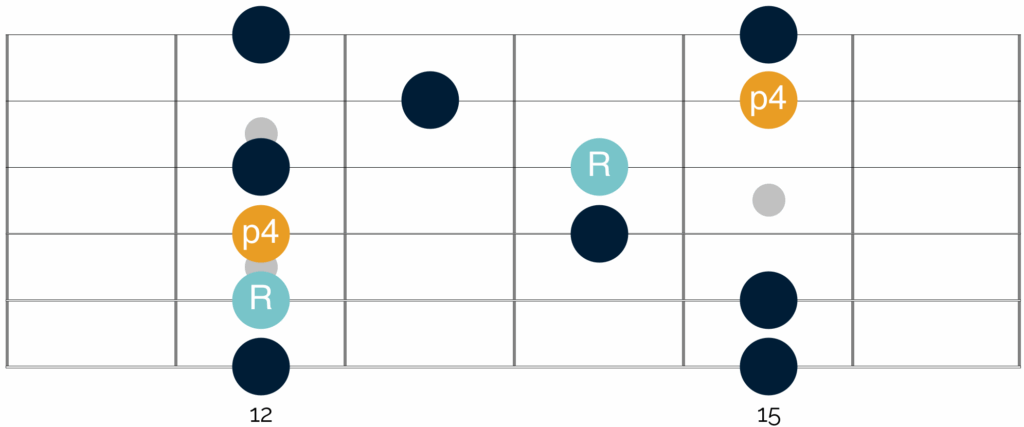For me, the perfect fourth is the trickiest of the tension notes to target effectively. Unlike the flat third and flat seventh (which we’ll cover in the next lesson), I don’t think the fourth offers so many options.
However, there is one particular technique that Stevie Ray Vaughan uses in his playing (and which John Mayer later went on to adopt) which I think can work really well.
I explain this in detail in the video above.
First though, let’s look at where you can find the 4th interval in the pentatonic shapes we’ve focused on so far:

The easiest way of finding the 4th is to head to the tonic note, and from there just shift up one string and you’ll find the 4th.
The only exception to this is between the G and B strings. Here rather than sitting on the same fret, you’ll find the 4th one string and one fret higher.
We can see this if we look at the 4th shape of the minor pentatonic scale (do you see what I did there!? 😉)

As you can hopefully see, the 4th interval on the D string sits directly above the tonic note on the A string. Conversely, the 4th interval on the B string sits one fret higher than the tonic note on the G string.
Targeting the 4th
I outline my favoured way of targeting the 4th in the video above. However you can apply that same idea – of playing the 4th and then ending abruptly – in a variety of different ways.
For example, you don’t need to pull off to hit the note; you can simply play it before cutting the phrase short.
This will create quite an abrupt feel which won’t always be appropriate.
However when used sparingly and in a more upbeat blues context, this will provide you with more options for creating varied and interesting solos.
As in the previous lessons – experiment with different options and shift this into different positions of the fretboard.
This will build your confidence identifying intervals all over the fretboard and add a bit of that SRV magic to your playing when the time is right 😁
